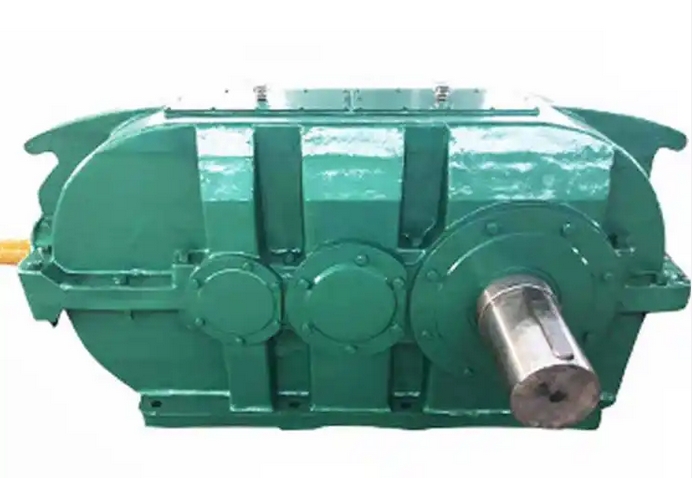For the DCY450-40-2N hard-tooth surface gear reducer, what type of bearings should be selected?
When choosing bearings for DCY450-40-2N hard tooth gear reducers, factors such as load, speed, and installation space need to be considered. Here are some suitable bearing types:
Input shaft bearing
Angular contact ball bearing: DCY450-40-2N hard tooth surface gear reducer has a relatively high input shaft speed, usually around 1500rpm. Angular contact ball bearings can withstand both radial and axial loads simultaneously, and have a high limit speed, making them suitable for high-speed rotating input shafts. When the axial load is not large, angular contact ball bearings with smaller contact angles can be selected; If the axial load is large, choose angular contact ball bearings with larger contact angles.

Deep groove ball bearings: With a simple structure and easy maintenance, they are mainly used to withstand radial loads and can also withstand certain axial loads. When the axial load of the input shaft is small, deep groove ball bearings can meet the requirements, and their price is relatively low with good economy.
intermediate shaft bearing
Cylindrical roller bearings: The intermediate shaft mainly bears large radial loads, and the radial bearing capacity of cylindrical roller bearings is strong. They can provide continuous and stable support torque within an effective size range, and allow for a certain amount of axial movement. NU, NJ and other cylindrical roller bearings can be selected to be installed at the support positions at both ends of the shaft.
Self aligning roller bearings: If the intermediate shaft may tilt or be misaligned to a certain extent during operation, self-aligning roller bearings can automatically adjust and adapt to shaft deflection, avoiding local overload caused by shaft tilt and extending the service life of the bearing.
Output shaft bearing
Conical roller bearings: The output shaft usually bears large radial loads and certain axial loads. Conical roller bearings can withstand both types of loads simultaneously and can adapt to different working conditions by adjusting the clearance of the bearings. For large-sized reducers such as DCY450-40-2N, large-sized tapered roller bearings can be used to meet the load-bearing requirements.
Self aligning roller bearings: When the load on the output shaft is large and the support accuracy requirements for the shaft are not particularly high, self-aligning roller bearings are also a good choice. It can withstand large radial loads and certain biaxial loads. When the shaft bends or the bearing seat tilts, it can automatically adjust the internal centering contact angle to prevent one-sided overload of the bearing.
When selecting bearings in practice, it is also necessary to determine the model and specifications of the bearings based on the specific working conditions of the reducer, such as the precise value of the load, working temperature, lubrication method, etc., through accurate calculation and analysis, to ensure that the bearings can work reliably and extend the service life of the reducer.

